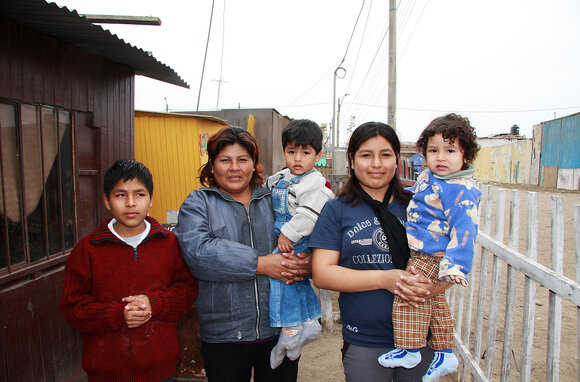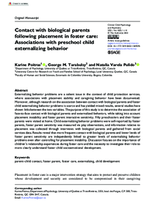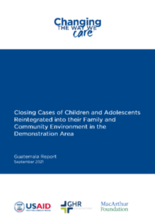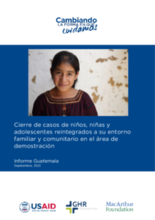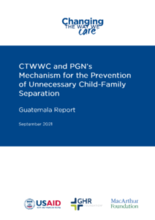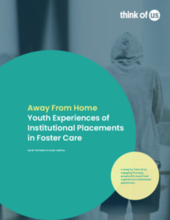This page contains documents and other resources related to children's care in the Americas. Browse resources by region, country, or category.
Displaying 151 - 160 of 1438
The purpose of this study is to determine the association of face-to-face contact with biological parents and externalized behaviors, while taking into account placement instability and foster parent interactive sensitivity.
The purpose of this study is to determine the association of face-to-face contact with biological parents and externalized behaviors, while taking into account placement instability and foster parent interactive sensitivity.
The number of U.S. children orphaned during the COVID-19 pandemic may be larger than previously estimated, and the toll has been far greater among Black and Hispanic Americans, a new study suggests. More than half the children who lost a primary caregiver during the pandemic belonged to those two racial groups, which make up about 40% of the U.S. population, according to the study published 7 October, 2021 by the medical journal Pediatrics.
The report is aimed at professionals in social work, psychology and pedagogy who work directly with children who are in the process of reintegration into a family and community environment. The document contemplates the process carried out for the closure of cases approached from a case management methodology. The report captures the experience that was had in Zacapa, Guatemala, and it reflects on the importance of reintegration through a planned process of case management and close accompaniment to families and caregivers.
El documento “Cierre de casos de niños, niñas y adolescentes reintegrados a un entorno familiar y comunitario en área de demostración” es un documento dirigido a profesionales de trabajo social, psicología y pedagogía que trabajan directamente en la atención a NNA que están en proceso de reintegración a un entorno familiar y comunitario, el documento contempla el proceso realizado para el cierre de casos abordado desde una metodología de gestión de casos, dentro del documento también se narra la experiencia que se tuvo en Zacapa, Guatemala y se reflexiona sobre la importancia de la reintegración a través de un proceso planificado de gestión de casos y de acompañamiento cercano a las familias y cuidadores.
This report includes the key lessons learned and the achievements resulting from CTWWC/PGN follow-up and family and economic strengthening activities provided to 18 families, along with information about 66 children and adolescents who remained with their family and community environment. The project also raised families’ awareness about the importance of providing children with safe and protective settings to foster their wellbeing through positive and loving parenting.
An estimated 2.7 million grandparents in the United States are taking the lead in raising their grandchildren. More than 6.1 million children under 18 live in their grandparents’ households. Focusing on your physical, mental and financial health is critical if you are your grandchild’s primary caregiver.
This study consists of an analysis of government digital policies focused on children in Uruguay between 2009 and 2019. To facilitate this, the CRC was used as a framework to categorise key features of the principal strategies that have been implemented. It argues that while great advances have been made in terms of digital access, this has not been sufficiently accompanied with comprehensive and child-centred solutions that encompass regulations and children and adult digital education.
This study provides a deep, nuanced understanding of the lived experience and mental models of young people who have recently lived in institutional placements while in foster care. It offers an understanding of institutional placements from youths’ perspectives.
This study sought to understand how intercountry adoptees with adoption discontinuity histories experience legal, relational, and residential permanency losses through the framework of ambiguous loss and trauma.

